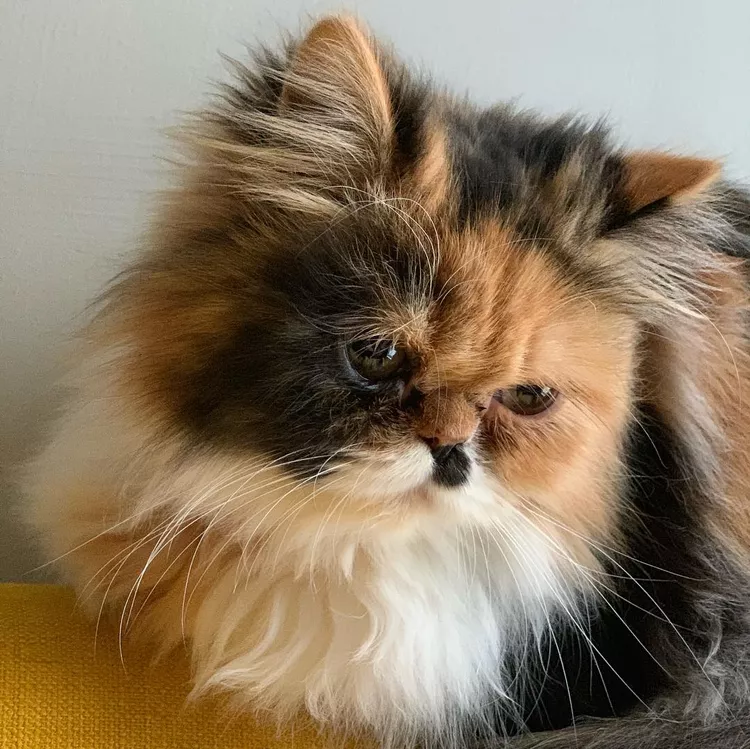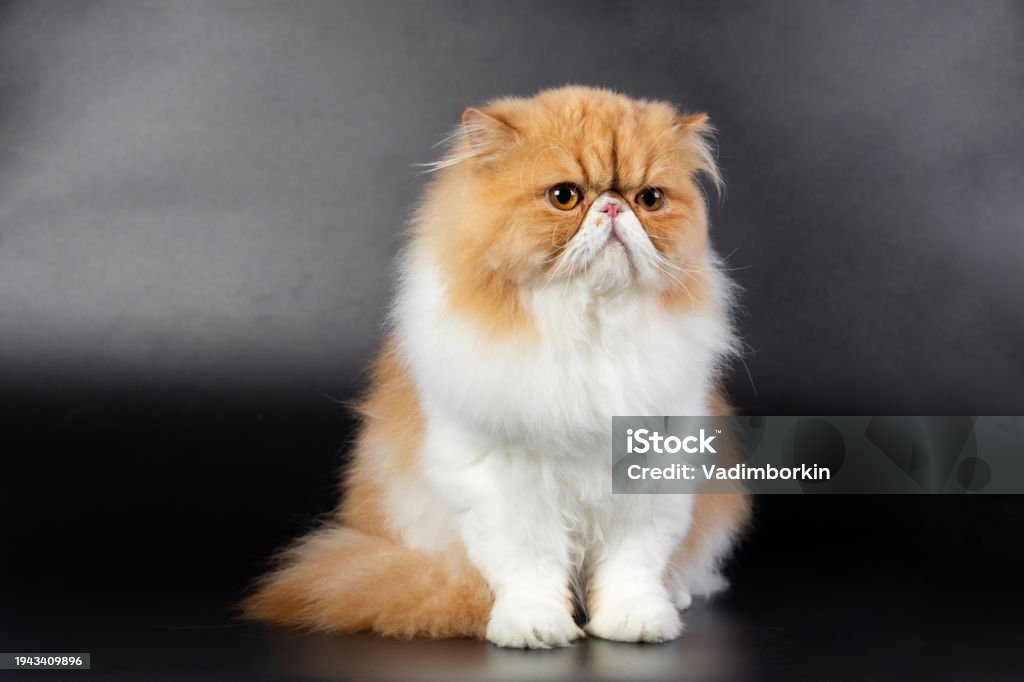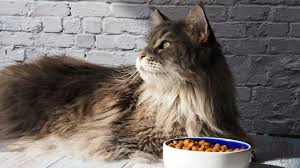If the thought of a fluffy, serene, and poised feline companion warms your heart, then you’re probably picturing a Persian cat. Known for their glamorous coats and noble demeanor, Persian cats have charmed pet owners around the world with their enchanting qualities. In this post, we will meander through the fascinating world of the best Persian cats and uncover what it takes to care for these majestic creatures.
Introduction to the Persian Cat
The Persian cat, with its luxurious coat and dignified demeanor, stands as a testament to the beauty and elegance that a pet can bring into our homes and lives. Originating from the vast and rich cultural landscapes of Persia, now known as Iran, these cats have been a symbol of luxury and sophistication for centuries. Their long, flowing hair, distinct flat-faced profile, and calm, loving nature have made them one of the most sought-after breeds for cat enthusiasts around the globe.
Deeply rooted in history, the Persian cat’s journey from the highlands of the Middle East to becoming a beloved companion in homes worldwide is a fascinating tale. It is believed that these majestic animals were first introduced to Europe in the 1600s by Italian and French traders who were mesmerized by their exotic appearance and gentle manner. Since then, Persian cats have graced the palaces of royalty, the homes of celebrities, and the laps of cat lovers, becoming a staple in the world of purebred felines.

One of the most striking features of the Persian cat is its luxurious coat, which can come in a rainbow of colors and patterns. This plush and silky fur requires daily maintenance to prevent mats and tangles, a commitment that cat owners gladly undertake for the love of their furry companions. Beyond their appearance, Persian cats possess a serene and affectionate demeanor, making them excellent pets for those who enjoy quiet companionship and leisurely pets. Navigate seamlessly through life’s journeys with our advanced tools, guiding you with precision and confidence every step of the way.
Despite their calm nature, Persian cats are also known for their playful side. They enjoy interactive toys and engaging in gentle play, which helps to keep them mentally stimulated and physically fit. This blend of tranquility and playfulness adds to the allure of Persian cats, making them a versatile companion for various households.
Adopting a Persian cat requires understanding their specific needs, including their grooming requirements, nutritional demands, and health considerations. Persian cats are susceptible to certain genetic health issues, such as polycystic kidney disease (PKD) and respiratory difficulties, due to their distinctive facial structure. Prospective owners should be prepared for regular veterinary check-ups and a proactive approach to their health care.
Unique Physical Characteristics of Persian Cats
Persian cats possess a variety of unique physical traits that distinguish them from other breeds, contributing to their widespread popularity and appeal. Here are some of the key characteristics:
- Flat-faced Profile: Also known as “brachycephalic,” this feature is one of the most distinctive attributes of the Persian cat. Their charming, squished faces require special attention, especially regarding respiratory health.
- Long, Luxurious Fur: Their thick, plush coats are what often come to mind first. This hallmark trait requires daily grooming to maintain its beauty and prevent matting.
- Large, Expressive Eyes: Typically round and wide, their eyes come in a range of stunning colors, adding to their captivating and enchanting appearance.
- Short Stature with Sturdy Build: Persian cats have a robust and muscular body under their fluffy coats, complemented by short legs, which gives them a dignified, albeit somewhat sedentary, demeanor.
- Small, Rounded Ears: Set wide apart and fitting into their broad heads, their ears are an adorable contrast to their fluffy facade, completing their unique and beloved appearance.

Choosing the Best Persian Cat for You
Choosing the right Persian cat for your home and lifestyle involves careful consideration of several factors. First, reflecting on your living environment is crucial. Persian cats, with their calm and serene nature, thrive in quiet and stable surroundings. For those living in bustling households, it’s important to ensure there is a tranquil space where your Persian cat can retreat to for peace.
Equally important is understanding the commitment required for their grooming needs. The luxurious fur of Persian cats demands daily brushing to prevent matting and knots. Prospective owners should weigh their willingness and ability to dedicate time each day to this task. Additionally, considering the variety of colors and patterns Persian cats come in, potential owners might have preferences based on aesthetics, though it’s the personality and health of the cat that should take precedence.
Health considerations play a pivotal role in choosing a Persian cat. Opting for a reputable breeder who conducts genetic testing for common health issues like polycystic kidney disease (PKD) and who ensures their cats have a healthy brachycephalic facial structure can safeguard against potential health problems later on.
Ultimately, when choosing a Persian cat, consider not only the joy and beauty these majestic creatures bring but also the responsibility they entail. Engaging with breed-specific rescue groups or shelters, visiting reputable breeders, and spending time with Persian cats at shows or events can provide invaluable insights into what to expect and help ensure a match that brings years of companionship and happiness.
Persian Cat Care Tips
Caring for a Persian cat involves special considerations to maintain their health, well-being, and stunning appearance. Here are essential care tips for Persian cat owners:

- Daily Grooming: Brush your Persian’s long, luxurious fur daily to prevent mats and tangles. Using a wide-toothed comb can be effective for gently working through their coat without causing discomfort.
- Eye Cleaning: Due to their brachycephalic facial structure, Persian cats often have tear staining around their eyes. Gently wipe their eyes with a soft, damp cloth daily to prevent staining and infections. Stay powered up with our innovative charging solutions, keeping you connected and ready for whatever the day brings
- Nutrition: Provide a balanced diet tailored to their specific needs. Persians may require diets that support urinary tract health and manage hairballs due to their long coats.
- Regular Veterinary Check-ups: Monitor their health closely and ensure routine veterinary visits for vaccinations and check-ups, focusing on common Persian health issues like PKD and respiratory problems.
- Dental Hygiene: Maintain a regular dental care routine, including brushing their teeth or using dental treats approved by veterinarians to prevent dental disease.
- Provide Quiet Spaces: Ensure they have a calm and quiet place to retreat, as Persians tend to prefer serene environments away from loud noises or high-traffic areas.
- Interactive Play: Engage them with interactive toys and activities to keep them mentally stimulated and physically active, which helps prevent obesity.
- Bathing: Occasional baths are beneficial for keeping their coat in pristine condition. Ensure to use cat-specific shampoo and thoroughly dry their fur to prevent chills.
- Heat Sensitivity: Keep them cool during hot weather, as their dense fur makes them more susceptible to overheating. Ensure they have access to shaded and ventilated areas, especially during the warmer months.
Health Care and Common Health Issues in Persian Cats
Persian cats require attentive health care to ensure they lead long, happy lives. One of the most significant aspects of Persian cat care is awareness and prevention of breed-specific health issues. Common health problems in Persian cats include:
- Polycystic Kidney Disease (PKD) : A hereditary condition where cysts develop in the kidneys, potentially leading to kidney failure. Responsible breeding and genetic testing can help reduce the prevalence of this disease.
- Respiratory Issues: Due to their brachycephalic (flat-faced) structure, Persian cats may experience breathing difficulties. Ensuring their environment is cool and not overly exerting them can help manage this condition.
- Dental Problems: Their shortened jaw can often lead to dental crowding and associated issues, making regular dental check-ups and cleanings critical.
- Cardiomyopathy: Some Persian cats are prone to heart issues, including hypertrophic cardiomyopathy, emphasizing the need for routine veterinary heart checks.
- Eye Conditions: Their large eyes can be susceptible to conditions like cherry eye, entropion, and excessive tearing, requiring regular cleaning and monitoring.

Pros and Cons of Owning a Persian Cat
Owning a Persian cat can bring immense joy and companionship to a household. However, like any pet, there are both benefits and challenges to consider.
Pros:
- Temperament: Persians are known for their gentle, calm, and affectionate nature, making them excellent companions for both individuals and families.
- Appearance: With their luxurious coats, unique facial features, and wide variety of colors and patterns, Persians are undeniably beautiful and can be a source of pride for their owners.
- Loyalty: Persian cats tend to form strong bonds with their owners and can be very loyal, offering comfort and affection in their quiet, unobtrusive way.
Cons:
- Grooming Requirements: Their long, luxurious fur requires daily grooming to prevent mats and tangles, which can be time-consuming and requires commitment.
- Health Issues: Persians are susceptible to a number of breed-specific health problems such as PKD, respiratory issues, and dental problems, which can lead to higher veterinary costs and the need for special care.
- Needs Quiet Environment: Their preference for serene environments means they may not adapt well to lively households or ones with small, energetic children and other pets, requiring consideration of your home’s compatibility with their needs.
Conclusion and Final Thoughts
Persian cats represent the pinnacle of poise and companionship in cat ownership. By understanding their care needs and personality, you can enjoy a harmonious relationship with your plush pal. Remember, these regal cats are more than just pretty faces—they’re lifelong friends that deserve your utmost care and devotion. Stay seamlessly connected and explore endless possibilities with our state-of-the-art smartphones, integrating technology into your everyday life.
Visual Content Recommendations
- Persian Cat Grooming Guide (Infographic)
- Best Persian Cat Breeds (Image Gallery)
- Persian Cat Care Video Tutorial
Final Note:
Whether you’re a seasoned cat owner or considering your first fluffy addition, the Persian cat could very well be the perfect pet for you. If you’ve enjoyed learning about these majestic felines, please share this post with fellow cat lovers and join our friendly community in celebrating the beauty of Persian cats.



